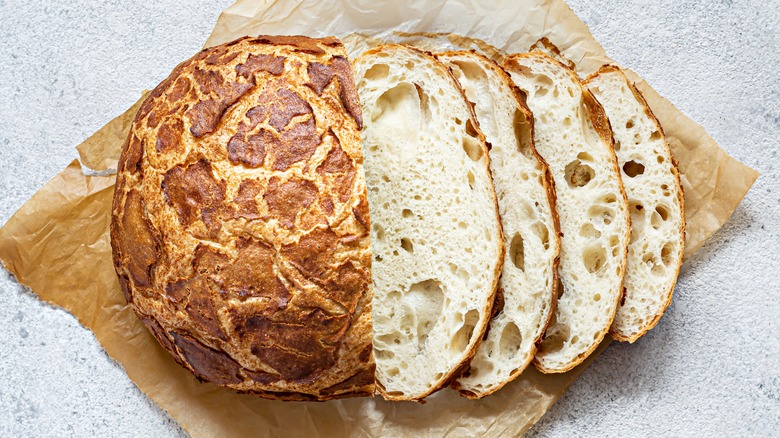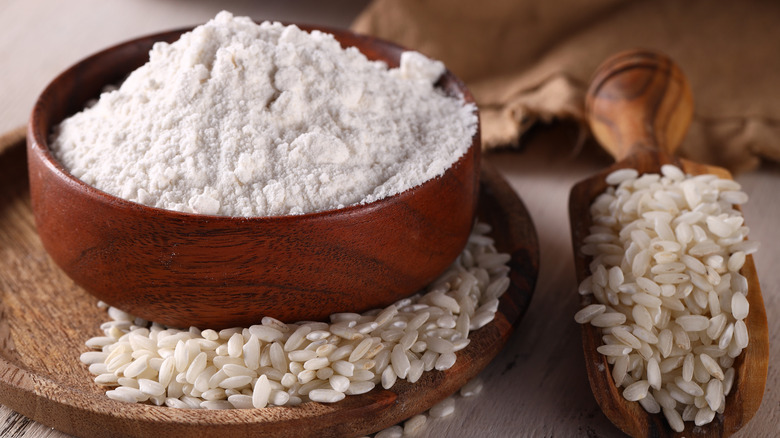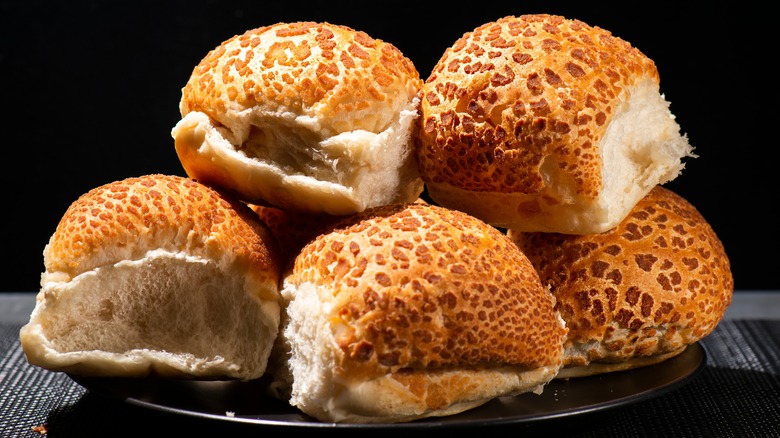How Tiger Bread Got Its Whimsical Name
You may have never heard of tiger bread, but there's a good chance you've tasted it — this bread is known around the world by quite a few different monikers. Citizens of the United Kingdom associate it with another animal, calling it "giraffe bread," while many Americans know it as "Dutch crunch." This latter term is an homage to the bread's country of origin, the Netherlands, where bakers use the terms tijgerbrood and tijgerbol. No matter what you call it, this distinctive loaf of bread is characterized by a soft interior and crispy, textured crust that resembles the striped body of a tiger — hence one iteration of its name.
While the pale, pillowy center of tiger bread is similar to your average loaf of mildly flavored white bread, the exterior is entirely unique in taste and appearance. Just before the dough goes into the oven to bake, a paste is prepared by combining rice flour, instant yeast, salt, sugar, toasted sesame oil, and warm water. This mixture is slathered over the top of the dough, and the crust splits into its signature sharp, crackled pattern as the bread expands while baking.
The international origins of tiger bread
The Netherlands has received international recognition for some of its unique culinary traditions, especially in baking. Its citizens are credited with the invention of the deliciously caramel-filled stroopwafel and, of course, the Dutch oven. Though it appears the Dutch also baked the first loaf of tiger bread, pinpointing how this specialty became part of their national cuisine is challenging. The animal for which it is named, as well as its two defining ingredients — rice flour and sesame oil — have origins elsewhere. Tigers, like rice, originated in Asia, while sesame arrived there from Africa around 300 B.C.E. The most plausible story is that this particular pastry is the result of Dutch colonization of Indonesia in the 1600s.
Sources vary on its exact date of invention, but the earliest records of tiger bread are from the 20th century, at which point it quickly crossed the world to San Francisco, California, where it has since become a local favorite.
How to enjoy tiger bread
With its fluffy interior and crunchy edges, sliced tiger bread makes excellent toast to be enjoyed simply with butter, but you can also delve into more of Dutch cuisine by transforming it into a classic Netherlands breakfast: bread with chocolate sprinkles. The delicately earthy, nutty notes of the rice flour and sesame oil topping pair well with the sweetness of the sprinkles. This versatile bread is equally suitable for savory snacks.
If you bake tiger bread at home or obtain it from a local bakery, you can choose small round or oblong loaves, which are perfect for hamburgers or sandwiches. The ragged, tasty crust provides a nice contrast to delicate slices of fresh vegetables, or a tender patty for a juicy all-beef burger. You can embrace traditional Dutch ingredients, like herring and cheese, or highlight the Asian flavors by incorporating Indonesian ingredients, such as fish sauce, lemon basil, and chilis.



